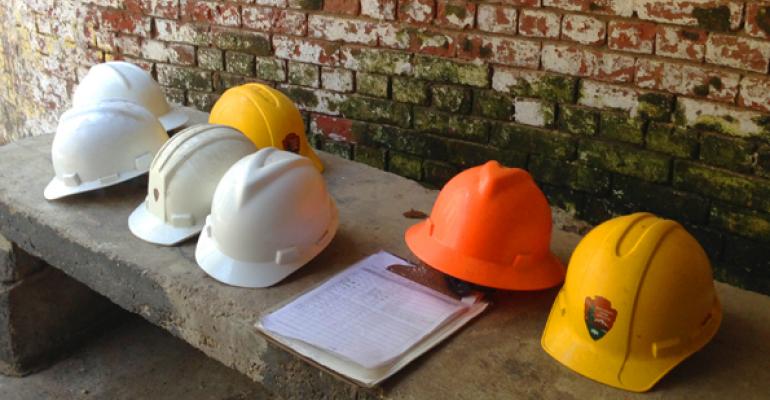Apartment building developers have a lot to worry about. So many new developments are under construction, they are likely to compete with each other—and not just for residents.
Developers are also competing to find construction workers to build their projects.
“A very tight construction labor market is going to get even worse,” says Bill McDonald, president and chief investment officer of Mill Creek Residential, a multifamily developer. “It could cause a meaningful ramp up in costs.”
The aftermath of the crash
The contractors who build apartment properties are having a hard time hiring and retaining workers on their construction projects. “Labor is incredibly difficult to find, and skilled labor… ever more so!” says Michael D'Andrea, senior project manager, Southwest development, for Alliance Residential, a privately held multifamily investor.
Since the housing crash the local labor market for construction workers has shrunk by almost 46 percent. “Unfortunately, and due to a number of socio-economic factors, those same folks are not re-entering the labor market,” says D'Andrea.
During the boom many of these workers may have been recent immigrants who have returned to their home countries during the recession and the slow economic recovery. Now that there are once again jobs in the construction business, it is still not a simple thing for these workers to return.
Other people who worked in the construction industry during the last boom may have moved on to other sectors, such as the fossil fuel extraction business. Now that oil prices have dropped and many “fracking” enterprises have scaled back, some of these workers may be available—though they may not be located in the right communities, where apartment developers need them the most. It will take time for contractors to rebuild their workforce.
“All of the major sub trades have experienced this decline and loss of skilled labor,” says D'Andrea. “The trades most affected from our perspective have been the drywall, plumbing and stucco subcontractors.”
Bay Area hardest hit
Different markets have different problems with labor. The shortage is most intense in places like the San Francisco Bay Area, where many construction projects are still ongoing, according to says Scott Wise, executive managing director of development and construction services for Greystar Real Estate Partners. In other places, like Washington, D.C. and Virginia, the fight to find workers has gotten a little easier.
“The labor shortage has moderated and improved in some markets as supply has come in,” says Wise.
Materials prices relatively level
The price of construction materials has been less troublesome. “The market has not seen any ‘out of the ordinary’ price increases,” says Marc Padgett, of Summit Contracting, a general contracting firm.
Lumber prices are one of the exceptions. “Some of the negotiations with Canada have recently caused the lumber market to fluctuate more than we have seen in a while,” says Padgett.
“We have seen the lumber markets jump approximately 14 percent annually in this last real estate cycle,” says D'Andrea.
Prices for drywall, concrete, steel and petroleum-based products have remained steady, with standard 2.0 to 5.0 percent annual increases, he adds.

